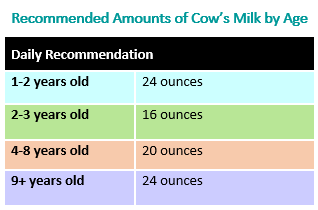By: Claire McCarthy, MD, FAAP
All parents want their children to have healthy diets—and part of that is getting enough protein. With picky eaters, that can feel hard. But it doesn’t have to be hard.
Here are some things about protein that you may not know—and some ideas to make mealtimes easier.
When all your child will eat is chicken nuggets:
As a pediatrician, I talk with parents all the time about what their children eat. And very often I find that when it comes to giving their children protein, families feel frustrated—and worried. “All he will eat is chicken nuggets” is something I commonly hear.
When babies are small it’s not really an issue, because they are on breast milk or formula. But as they grow into toddlers and preschoolers and we expand their diets, that’s where the worry sets in—because the age when they are expanding their diets is also the same age when they become more independent and willful. It’s a power struggle that often plays out as picky eating.
Enter the chicken nugget. I’m not sure what it is about them that makes kids almost universally like them; perhaps it’s the same thing that makes French fries universally appealing. Some even look like French fries. And for many families it can seem like once you’ve started the “nugget habit,” there’s no turning back. But here’s the thing: you don’t need to start that habit. And for those of you already in the habit, there is hope.
| Why protein is an important part of your child’s diet:When we think of protein we think of muscles, but protein is a building block for many other parts of the body, such as hair, bones, enzymes, skin and blood. Our bodies are very good at recycling and reusing proteins as they break down, but we do need to get some from our diet. |
Here are three things about protein that many parents don’t know:
1. Children don’t need as much protein as you might think. The body is remarkably good at recycling.

2. If children are drinking the recommended amount of cow’s milk, they are likely getting all or most of the protein they need. Every ounce of cow’s milk has 1g of protein; soy and plant-based milks do not.

If you compare this to the recommended amounts of protein above, you’ll see that milk alone could take care of all a child’s protein needs until age 9! Hopefully, that eases some parents’ worries. After age 9, your child is hopefully old enough to negotiate about healthy food choices.
It’s certainly true that some children don’t like milk, and that drinking more than the recommended amount can lead to constipation or anemia (and sometimes poor eating habits when children want milk instead of food). Which leads to the third point…
3. There are lots of ways besides meat or cow’s milk to get protein and mix it up at mealtime. Here are some other protein-rich ideas.
- Other animal products. Salmon, fish sticks, eggs, turkey lunch meat, yogurt, or mozzarella string cheese.
- Beans and grains. Soy products like soy milk or tofu. (You can even try soy “chicken” nuggets). Lentils, nut butter, hummus, oatmeal, or whole wheat pasta are more options.
- Vegetables. Yet another reason to get kids to eat their veggies! Peas, broccoli, and even potatoes have protein. (Not that potatoes are the best vegetable, but it’s good to know they have some protein).
The bottom line:
When it comes to getting protein into your child’s diet, you don’t have to get into battles—or give in to the daily chicken nugget diet. There are lots of ways to do it, and with a bit of creativity and persistence, your child can get what he or she needs.
- No clean-plate club. Don’t force your kids to eat something or finish everything, because that doesn’t work well (and makes everyone miserable). Kids don’t need a balanced meal at every meal of the day―what’s important is achieving balance over a day or two.
- Keep it on the plate; have a “one bite” rule. It can take lots of tries before a child realizes that something tastes good. It also helps when others set an example, so eat meals together whenever you can!
- Cook more meals at home. A homemade breaded chicken breast, for example, is healthier than takeout nuggets. Kids learn a lot about different foods and how to read food labels when they are involved in shopping for groceries and preparing meals―making them into healthier adults. Here are five more great reasons to cook with your kids.
If nothing is working, or you are worried about your child’s diet, call your doctor.
Yes, picky eating can just be a phase. But it’s important to bring up any concerns with your pediatrician, so you can brainstorm possible solutions together.
Article courtesy of HealthyChildren.org

